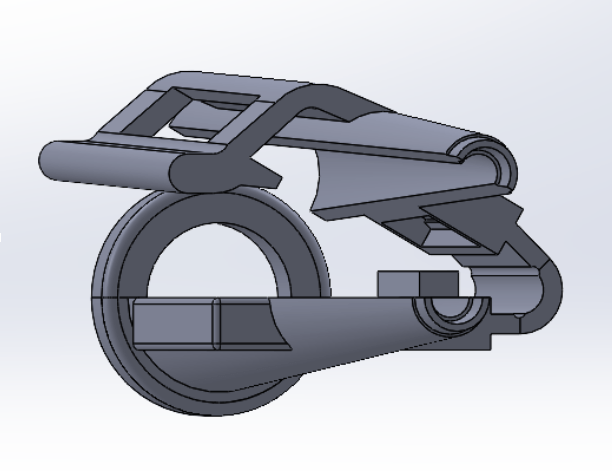Project Description:
The Central Venous Catheter (CVC) is a critical medical device used to deliver fluids, medications, or blood into a patient’s central veins, such as the internal jugular vein, using the Seldinger technique. This method uses a J-shaped guidewire to reduce the risk of inadvertent vessel injury. However, in high-pressure clinical environments, specifically in emergency settings, clinicians often face challenges reinserting the guidewire into the small diameter of the tip, then back into the advancer and sheath after withdrawal. The guidewire may become coated in blood and ultrasound gel, making it difficult to manipulate and reinsert. This can lead to the bending of the wire, increasing the risk of procedural delays, additional medical waste from opening a new CVC kit, and potential harm to the patient.
This project aims to address these technical difficulties and improve reinsertion efficiency by altering the current design of the guidewire management device. Our solution features an expandable, split body design with a snap-clip mechanism that when pulled back, allows the two halves to open and expose the wider diameter of the advancer. The two halves can be reunited by pinching, or forcing, the clip together again, in a snapping manner. The two halves are connected by a curved connector that is bendable and allows precise re-alignment. The protruding piece serves as another alignment and closing feature, such that the device must align to close as the wedge piece fits into the corresponding cavity. An additional adjustment to the tip is making the walls thicker, which reduces misalignments or gaps and ensures structural integrity. With this, we also made adjustments to the advancer, expanding its inner diameter from 2 millimeters to 4.5 millimeters at the point of attachment to the tip, while maintaining the remainder of the original design to maintain compatibility with the existing CVC procedures.
The prototype was developed using SolidWorks and evaluated through Finite Element Analysis (FEA) to ensure structural integrity. The CAD-based designs were 3D printed at Terrapin Works and have undergone usability testing with our clinical mentors at the University of Maryland Medical Center’s Trauma Simulation Lab. Testing compared reinsertion time, ease of use, and reliability under realistic conditions. By integrating clinician feedback and iterative prototyping, this device seeks to reduce procedural complications, enhance clinician performance, and ultimately improve patient outcomes during CVC placement.
